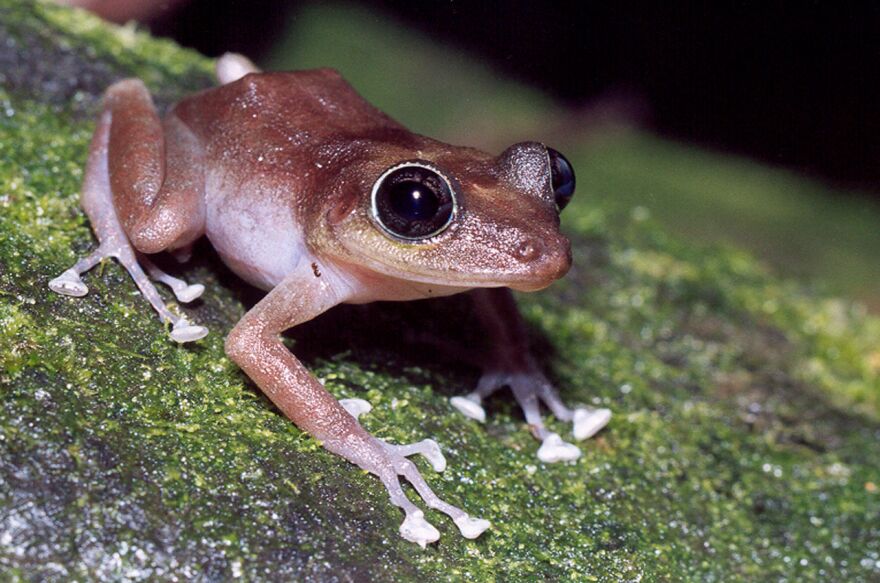Prosthetic limbs have come a long way since someone first walked on a wooden peg in about 300 B.C. A group of scientists at Northern Arizona University is now working on a way to make a computerized bionic ankle act like a real leg. Inspired by the animal world, they’ve got a new idea about how muscles behave like springs.

Ryan Cannon used to walk two miles every morning before work. Then he lost his right leg to an injury.
“Imagine the thing that you love in your life being taken from you, and only being one step away from you,” he says.
He never thought someday he’d walk for a living. Cannon is testing a battery-powered prosthetic ankle for researchers at Northern Arizona University. It squeaks and whirrs as he strides through a hallway, while half a dozen people pepper him with questions.
The research team is testing an algorithm to make robotic legs act more like real legs. NAU biologist Kiisa Nishikawa leads the project. “That’s the fundamental idea of the algorithm,” she explains, “to be able to capture that automatic adjustment that our muscles do, even when we experience completely unexpected perturbations like stepping in a hole or tripping on a hill.”

How muscles do that has been a mystery for a long time. Then Nishikawa had a revelation, inspired by the way frogs catch bugs: “You know, the frog sees the bug and it moves very rapidly, like in twenty-thousandths of a second, to open it mouth and stick out its tongue and catch a bug,” she says.
Nishikawa realized: muscles are springs. They stretch and shorten so fast the brain isn’t even involved. She hypothesized a protein called titin creates that Slinky-like motion. It winds up around other proteins like a big rubber band, storing energy to snap out later, if, say, you suddenly fall in a hole.
NAU partnered with BionX Medical Technologies, a Massachusetts company that builds prosthetic devices, to test the idea. They patched the algorithm into a computer chip.
Nishikawa says, “Our algorithm has a virtual muscle that lifts the toes and a virtual muscle that presses the heel against the ground to produce a reaction force that pushes you forward.”
Uzma Tahir is a biologist on the team. She watches Ryan Cannon, the bionic leg tester, walk up and down the hallway in what she calls a “tuning session.” His feedback will help the scientists tweak the algorithm to make the leg act like it has muscles.

"So our goal is to have this prosthesis device that’s adaptable just like our muscles, and it’s not optimized for just one task, so it can perform across all these terrains,” Tahir says.
Tahir studies tiny samples of animal and human muscle to see how much force they produce. Each bit of new knowledge is built into the algorithm. But it’s the tests with amputees like Cannon that really matter.
“We can look at all the curves we want on a computer screen, but if our user is not happy with the way it feels, then what’s the point of it?” Tahir says.
Cannon believes the right technology could change the lives of millions of amputees. They could go back to work, run or dance or climb mountains if they want to.
“How many people in the world can sit there and say, every step counts? The pun intended, right?” Cannon says. “Because they’re going to take that data set, they’re going to look at it, they’re going to analyze it, they’re going to learn a little more about how human walking is. I’ll walk a thousand miles, it doesn’t matter; I’ll just walk a thousand more.”
NAU researchers have a patent pending on the algorithm. When approved, they intend to bring it to the commercial market.








